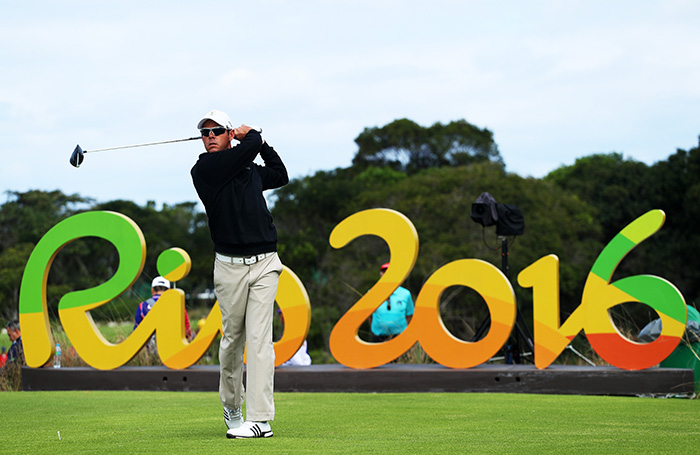Finding an accurate assessment of what is going on at the golf course isn’t as simple as it seems, writes GARY LEMKE in Compleat Golfer.
As Rio’s 2016 Olympic venues slip into a state of disrepair, due to a lack of maintenance and looting, it has been difficult getting reliable information on the fate of the golf course that saw the sport return to the Games after a century’s absence.
Course architect Gil Hanse recently rubbished negative reports of the links-style course situated in the Marapendi Nature Reserve to the west of Rio.
‘I’m hearing good things from locals,’ he said. ‘Back in March, one of the international news agencies put out something about the state of the Rio facilities – the terrible condition of the pools and how the Olympic Park has a chain-link fence around it.
‘They also ran an aerial photo of the “degraded” Olympic golf course. I looked at it and I’m like, “You can see the mower stripes on the greens. You can see all the bunkers are raked.
You can see the fairways are mowed. How is that degraded?” It was definitely a fake news story.’
‘It’s one of the great legacies that has come from the [Rio]Games,’ says Antony Scanlon, executive director of the International Golf Federation, which oversees Olympic golf. ‘We’re seeing regular play and regular maintenance.’
However, also frustrating is the lack of reliable reports relating to a course that was a hive of activity last August, as Justin Rose and Inbee Park became gold medallists.
Reportedly, the Olympic course averages about 700 rounds a month and hoped to double that number by the end of the year. Tourists are said to make up about 15% of players.
Rio is a bustling city with a population of some six million people, but a large chunk lies on or below the poverty line. Even during the 2016 Olympics, some of us who were accredited at the Games were witness to crime; ranging from petty to violent. The city is a spectacular sight, but one always got the sense that once the Olympic caravan had left, the pre-existing problems and impoverished conditions would return.
It is said there are some 1 500 golfers in Rio and the green fees at the Olympic course are around $75 – the average monthly salary for locals is $680 – although they are higher ($150) for visiting foreigners.
And even if 700 rounds of golf are played over a month, which is the official figure, then, at $100 a pop, there would be $70 000 of revenue coming in. Yet, the cost of maintaining the course was said to be between $75 000 and $100 000 a month.
Finding an accurate assessment of what is going on at the golf course isn’t as simple as it seems. The stories differ, and at times one gets the impression it’s easier to discover what lies behind the curtain of North Korea’s oppressive leader Kim Jong-un than it is to get the truth behind Rio’s golf course.
Marcio Galvao is the 67-year-old CEO of the Rio Olympic Golf Course. He’s straight-talking and wants to make golf in Rio ‘more inclusive’ to kids and the wider public while admitting the green fees are ‘a little bit expensive’.
But, he says, ‘We are very proud. Two years ago nobody believed golf would succeed at the Games. Nobody believed the golf course would continue to be open to the public. We’ll make this happen [keep it open]. It will take some work, of course, but we’ll make it happen.’
Some 14 months after the Olympic Games, the golf course doesn’t even have a website, despite assurances that one would be operational from January 2017.
However, the latest upbeat mood is a start and hopefully, the golf course won’t become another white elephant.
Photo: Scott Halleran/Getty Images
– This column first appeared in the October issue of Compleat Golfer, now on sale!








